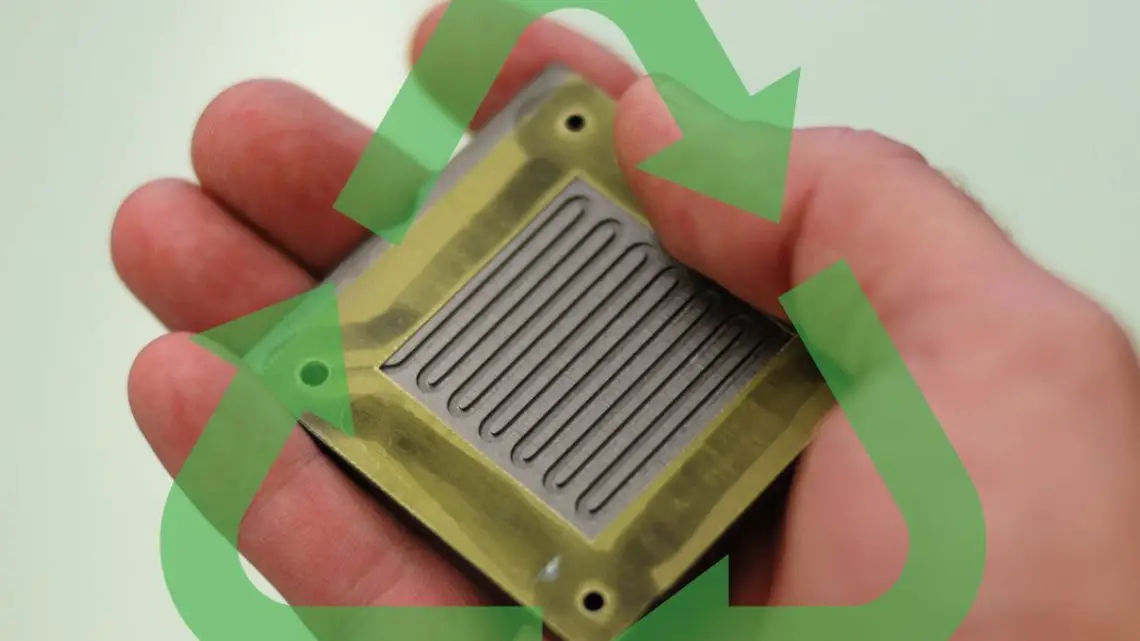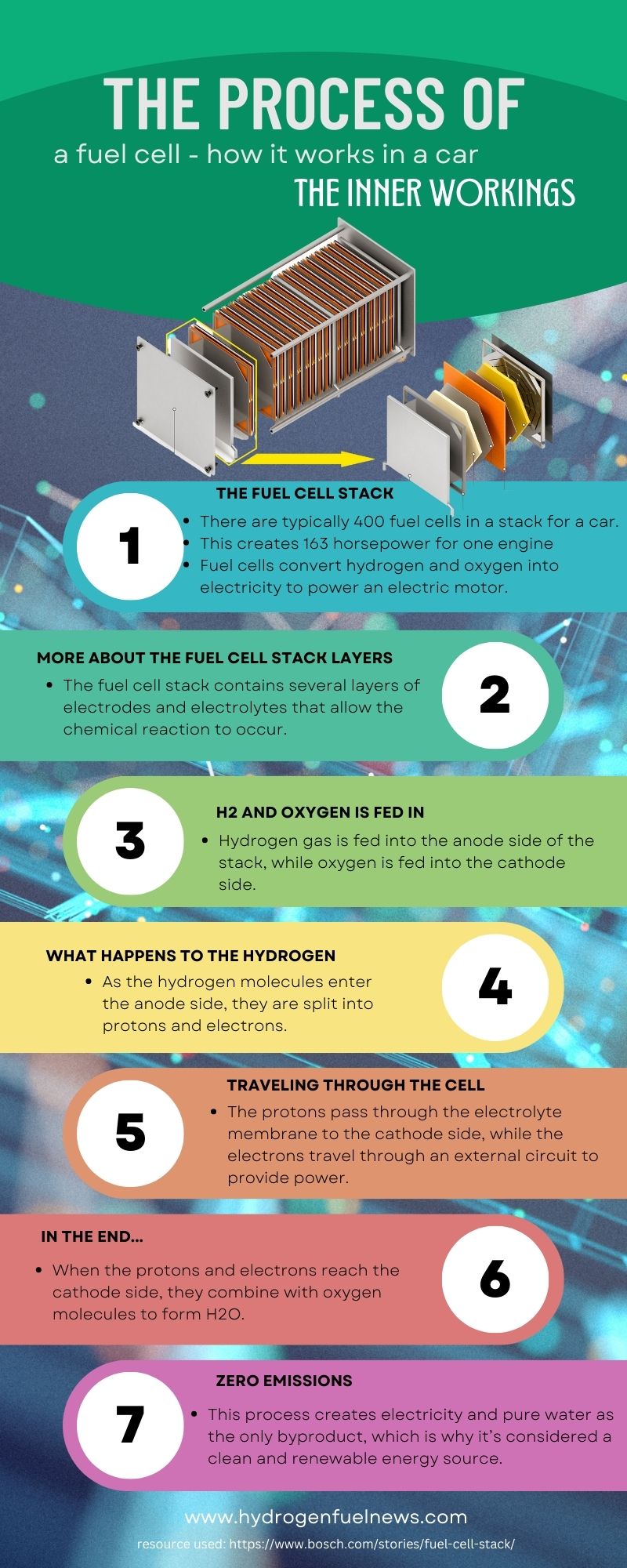
Are hydrogen fuel cells recyclable?
March 29, 2024 0 By Julie CampbellSince everything has a shelf life, some wonder if this way to use H2 is truly clean
Are hydrogen fuel cells recyclable? The world is becoming increasingly aware of the impact of technology when its life comes to an end. Now, many are questioning how green H2 can be if the materials needed to use it as clean energy cannot be recycled.
Many companies are placing a heavy focus on ensuring recyclability
Large players in hydrogen fuel cells and clean energy such as Ballard and Matthey have been pouring resources into ensuring that the materials they are using in hydrogen fuel cells can be recycled instead of ending up in landfills. After all, the entire idea of sustainable energy is to reduce the problems contributing to climate change, not simply create them in new places.
In fact, businesses are starting to pop up with a specific focus on recycling automotive hydrogen fuel cells because of the amount of money to be made.
Hydrogen fuel cells don’t last forever
Depending on usage patterns, after years of use, the catalysts and the metals that comprise them wear out and weaken. This requires the old unit to be replaced. If this meant dumping it into a landfill, it would hardly be an ideal sustainable green transportation solution.
That said, there are many materials in these units that can be recycled. Moreover, many of them are precious metals that are both rare and environmentally unfriendly to mine. Therefore, by recycling them, it not only helps to prevent more materials from ending up in landfills, but it also helps to reduce the need for mining them in the first place.
Recyclable materials
The most valuable metal usually contained in fuel cells is platinum, which is found in the catalyst’s anode and cathode. They are critical to the production of electricity through the use of hydrogen.
That said, hydrogen fuel cells also contain other materials that can be recycled, such as copper, carbon fiber panels, and a number of other metals.
Final thoughts
The more companies invest in methods and systems for recycling hydrogen fuel cells, the greener they will be as a part of the global decarbonization effort.
FAQs on Materials Used to Make a Hydrogen Fuel Cell
1. What is a hydrogen fuel cell?
A hydrogen fuel cell is an energy conversion device that produces electricity through a chemical reaction between hydrogen and oxygen, with water and heat as the only byproducts. It’s a clean energy source that has applications in various sectors, including transportation, stationary power generation, and portable power devices.
2. What materials are commonly used in the construction of a hydrogen fuel cell?
The most common materials used in hydrogen fuel cells include:
- Platinum: Used as a catalyst in the fuel cell’s electrodes.
- Polymer Electrolyte Membrane (PEM): A proton-conductive polymer that serves as the electrolyte in PEM fuel cells.
- Carbon: Often used as a substrate or support material for the platinum catalyst and as gas diffusion layers.
- Titanium and Stainless Steel: Used in the construction of the fuel cell stack’s hardware due to their corrosion resistance.
- Graphite: Utilized in the flow plates to distribute hydrogen and oxygen gas evenly across the cell.
3. Why is platinum used as a catalyst in hydrogen fuel cells?
Platinum is used because it has an excellent ability to catalyze the hydrogen oxidation and oxygen reduction reactions at the electrodes, which are crucial for the conversion of hydrogen into electricity. Its effectiveness and durability under the operating conditions of a fuel cell make it a preferred choice despite its high cost.
4. Are there any alternatives to platinum being researched for use in fuel cells?
Yes, researchers are actively seeking alternatives to platinum to reduce costs and improve the sustainability of fuel cells. Some of these alternatives include non-precious metal catalysts, such as those based on iron or cobalt, and alloy catalysts. However, these are still under development and may not yet match the performance and durability of platinum-based catalysts.
5. What advancements have been made in the materials for the Polymer Electrolyte Membrane (PEM)?
Advancements in PEM materials focus on improving conductivity, durability, and operating temperature range. Newer materials, such as hydrocarbon-based polymers and composite membranes, are being developed. These advancements aim to reduce costs, extend the lifespan of the fuel cell, and enable operation under broader conditions.
6. Can recycled materials be used in the construction of hydrogen fuel cells?
While the technology for recycling materials specifically for use in hydrogen fuel cells is still developing, there is potential for using recycled metals, such as platinum, in the catalysts and recycled polymers in components like the membrane or bipolar plates. Efforts in this area aim to improve the sustainability and reduce the environmental impact of fuel cell production.
7. How do the materials used affect the performance and efficiency of a hydrogen fuel cell?
The materials used directly impact the fuel cell’s performance and efficiency. For instance, the catalyst’s effectiveness influences the rate of the chemical reactions, while the membrane’s conductivity affects the efficiency of proton transfer. Durability and resistance to corrosion of construction materials also play a crucial role in ensuring long-term performance and reducing maintenance needs.
8. Are there any safety concerns related to the materials used in hydrogen fuel cells?
Most materials used in hydrogen fuel cells are safe under normal operating conditions. However, precautions are necessary to handle hydrogen gas safely due to its flammability. Platinum and other catalyst materials require careful handling during manufacturing due to their high cost and potential health effects if ingested or inhaled as fine particles.
About The Author
Julie Campbell is a veteran news writer with a primary focus on hydrogen fuel and renewable energy, technology, health and wellness. Campbell has been the head of a freelance writing company since 2003...READ MORE



 With over 15 years of reporting hydrogen news, we are your premier source for the latest updates and insights in hydrogen and renewable energy.
With over 15 years of reporting hydrogen news, we are your premier source for the latest updates and insights in hydrogen and renewable energy.